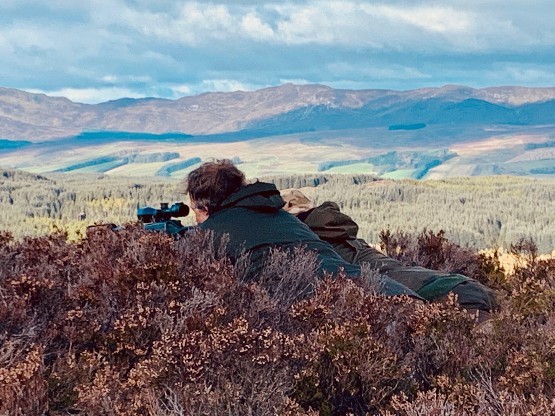NatureScot’s new incentives aim to help tackle Scotland's burgeoning deer population. PDS1-qualified individuals can apply now to participate.

NatureScot has introduced two new pilot schemes to address the increasing deer populations in Scotland, specifically targeting Central Scotland and the Highlands. These initiatives aim to support deer managers in reducing deer numbers, a critical step toward halting nature loss and meeting Scotland's biodiversity and climate objectives.

For applicants interested in participating in these schemes, NatureScot has announced that it will now accept the LANTRA PDS1 (Proficient Deer Stalker Certificate Level 1) qualification. When filling out the application, those with a PDS1 should select the DSC1 (Deer Stalking Certificate Level 1) option, as the system is yet to be updated to include the PDS1. This update ensures that the PDS1 qualification is recognised and accepted on the same terms as the DSC1, offering greater flexibility for applicants.
NatureScot states that this initiative is part of a larger strategy to tackle biodiversity loss and climate change. As nature faces global and local declines, the Scottish Biodiversity Strategy has set bold goals to halt nature loss by 2030 and restore natural environments by 2045. Effective deer management is a key element of this plan, as controlling wild deer populations is crucial to restoration and help Scotland reach its net-zero carbon emissions targets.

Given that 80% of deer management is undertaken by the private sector—often at a net cost to those managing deer—the incentive schemes are designed to provide crucial support. Notably, these pilots do not include public land. To ensure that culling surpasses the current levels in the pilot areas, payments will be made only for deer culled above a specified minimum rate.
In the Central Belt scheme, the minimum culling rate is set at four deer per 100 hectares per participating property, with payments available only for deer culled beyond this baseline. In South Loch Ness, the minimum rate is five deer per 100 hectares. Given the diverse terrain and varying property sizes in the Loch Ness area, some flexibility in these requirements will be negotiated on a case-by-case basis.
The payment structure offers £70 for each additional adult female deer over one year of age and £35 for juveniles of either sex.
To apply for the Deer Management Incentive Scheme, please fill out the application form Here: Deer Management Incentive Scheme pilots | NatureScot
Please Note: the pilot scheme will close on 6 September 2024.
For more details or to ask questions about the pilots, you can contact NatureScot directly via email:
- Central Scotland:
This email address is being protected from spambots. You need JavaScript enabled to view it. - South Loch Ness:
This email address is being protected from spambots. You need JavaScript enabled to view it.
Don't forget, If you’d like to take the PDS1 Deer Stalking Certificate you can enrol here: deer-stalking-course



















